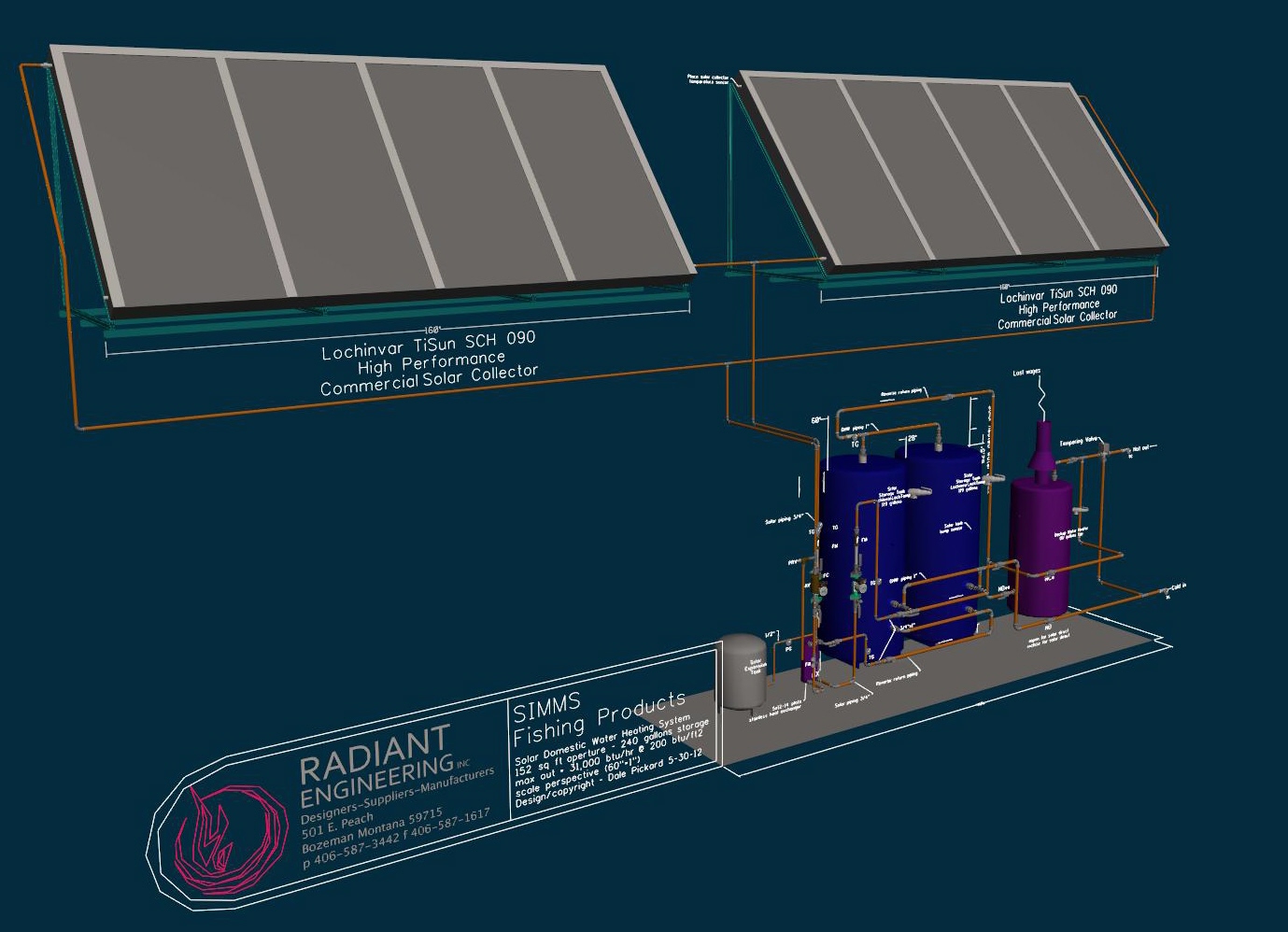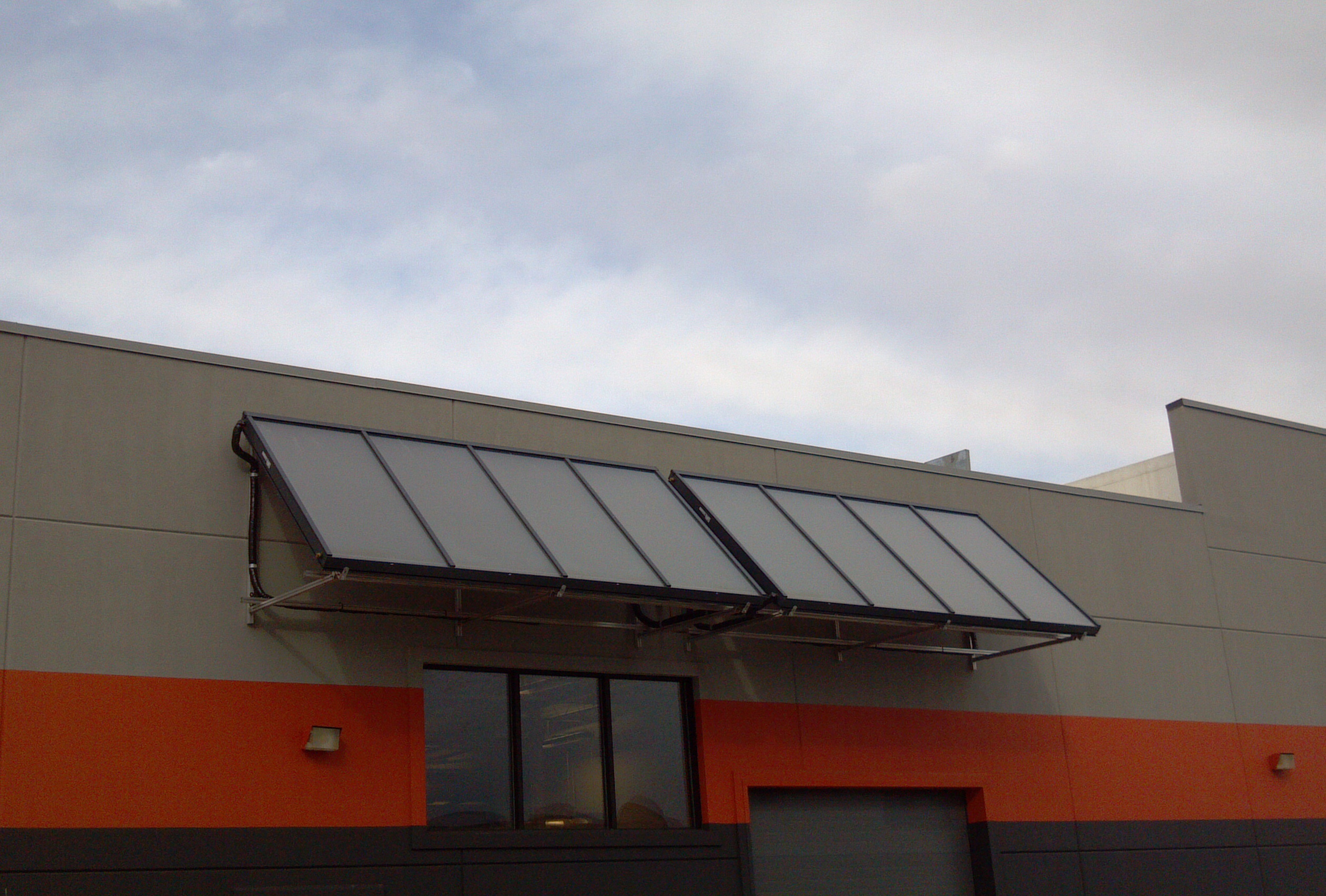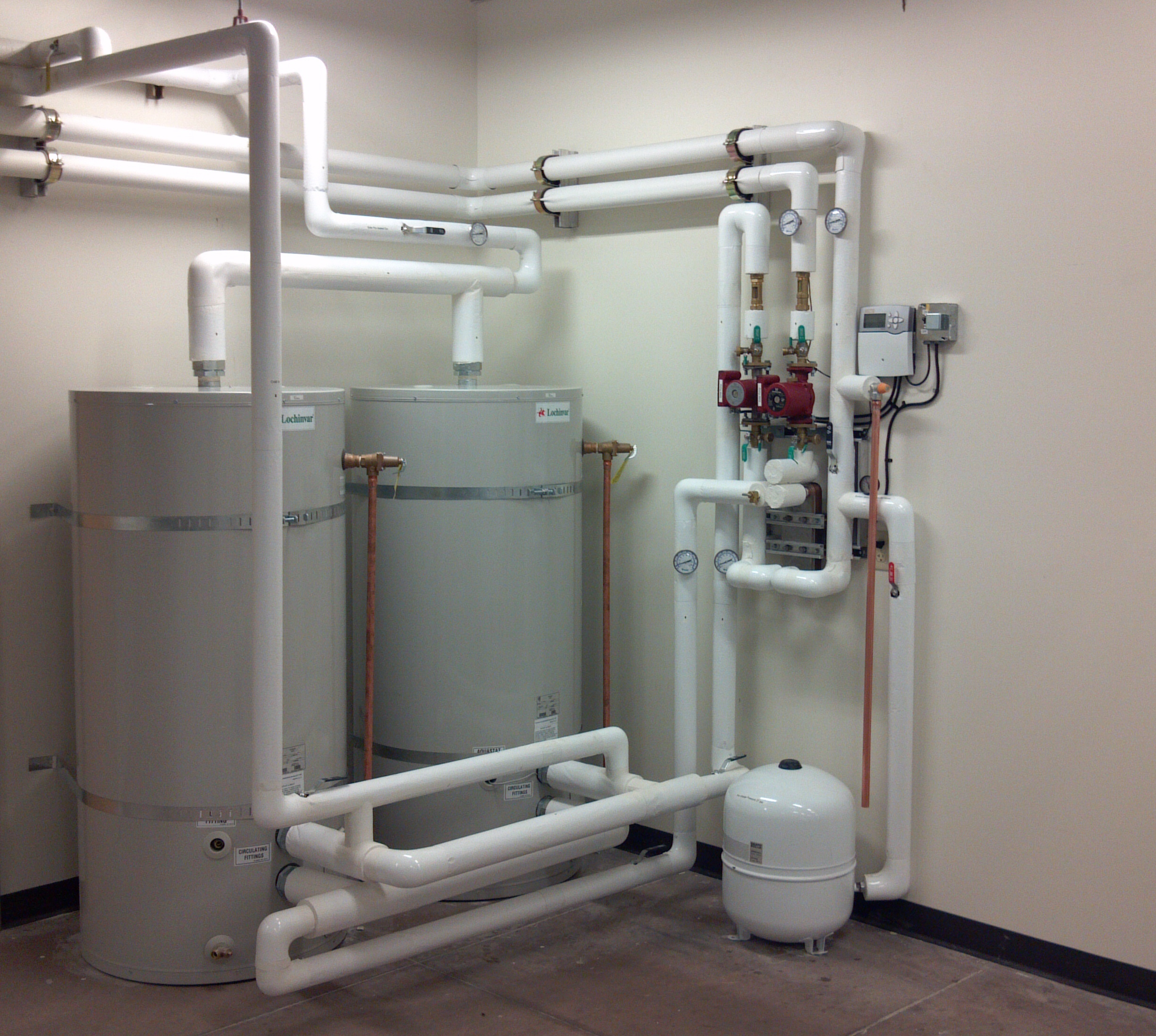Hydronic System Planning
CAD Standards
RADIANT uses Bentley MicroStation as our CAD platform of choice. MicroStation works seamlessly with AutoCad native DWG file formats. We use MicroStation to produce 2d design documents and 3d design models.
For planning services for a hydronic system, contact RADIANT. Floor plan files in .dwg or .dgn are preferred for planning your tubing layout.
Feature Project
SIMMS Fishing Products Solar Thermal Domestic Water Heating System
This system provides domestic hot water for the use in fishing wader test tanks in the manufacturing facility as well as all hot water points of use.
The system thermal and economic performance as well as the solar collector and storage sizing was determined using F-Chart software.
Radiant Design & Supply, Inc. provided part of the design in a 3-D pdf format. This format is useful in communicating the scale and design of the system to owner and other designers.
Radiant Design & Supply, Inc. pre-fabricated the mechanical system and tested the system components before co-ordinating the installation of the system.
Our approach to this project emphasizes the importance of continuity from initial designs to final installation. This system was built to last.
The system used Austrian built Lochinvar - TiSun commercial solar collectors, Lochinvar Lock-Temp hot water storage tanks, Grundfos circulators, Caleffi i-solar controls and a Crown stainless steel flat plate heat exchanger.
CRITIQUE OF A SOLAR THERMAL SYSTEM WITH A HIGH EFFICIENCY BOILER FLOOR HEATING SYSTEM
Floor Heating and Boiler Controls
The floor heating system we recommend is operated by a weather responsive outdoor reset control integrated into the boiler. These controls regulate the water temperature in the floor heating system according to the outdoor air temperature. This means of heating system control provides a regulated water temperature for the radiant floor that produces just enough heat to hold uniformly comfortable room temperatures without thermostat cycling.
This method of control produces uniform radiant floor temperatures that change slowly and proportionally to changes in outdoor temperature. Outdoor temperature changes, including sudden temperature drops (blizzard), and temperature rises (Chinook), are automatically compensated for so the indoor temperature remains constant. The system is reliant on thermostats only for zone temperature limiting.
More importantly, the heating water temperature is limited to the lowest temperature necessary to carry the actual heating load. This low temperature operation is the hallmark of efficiency for floor heating systems. High performance homes can be heated under design conditions with heating water temperatures that approach the desired room temperature.
In addition to comfort, these low heating water temperatures also provide for the most efficient operation of any heat source employed, including condensing gas boilers and especially solar systems.
Condensing boilers, like the Vitodens, are so called because they achieve very high 96%+ efficiencies through the extraction of the latent heat of the water vapor in the flue gases. However, in order to condense the vapor in the flue gas to liquid water it is necessary to operate the boiler heat exchanger at heating water temperatures that are below the dew point, i.e. less than 120 °F.
The reset controller built into the Vitodens boiler controls the combustion and regulates the heating water temperature to the lowest possible to encourage this condensing operation. A feature of the Vitodens boiler is that it maintains very high combustion efficiencies with record low emissions, even at very low firing rates.
Solar Systems
The operating efficiency of solar thermal collectors is strongly related to heat losses from the collector to the ambient air. For this reason, the best solar applications are designed to always carefully expose the solar collection circuit to the lowest temperature loads available. In a home, this is typically the cold potable water destined to become hot domestic water. The entire domestic water heating load consists of raising the temperature of incoming cold water from lows of 40° - 50° to highs of 125° - 140°.*
It is partially this cold incoming water that makes domestic water heating typically the very best of solar thermal applications. Dedicated solar domestic water heating systems are able to do a great deal of useful work – and offset more conventional fuel - at these low load temperatures.
For this reason, it is vitally important that solar system designs specifically prioritize the collector array to address this low temperature load in isolation from other heat sources.
If a backup heat source is allowed to provide the required domestic water temperature lift directly and immediately, then the utility of the solar system in heating domestic hot water essentially falls to zero. Simply put, if the water is already heated by using the backup fuel, then the job has been done.
Conventional dedicated solar water heating systems typically dedicate a storage tank to the solar system to isolate the incoming cold water from the backup heat source so that as much as possible of the temperature lift needed to produce use temperature is provided by the solar system alone. A dedicated solar domestic water heating system provides much of its energy savings by pre-heating the incoming water to a higher temperature before a back up heater is employed to raise the water to use temperature.
Design Critique - Avoid These Mistakes
The design with negative consequences we have seen shows a storage tank that is fitted with a heat exchange coil in the bottom of the tank as well as a smaller tank, intended to hold the potable domestic water, suspended in the top of the tank.
It is intended that the shell of the suspended tank serve as the sole heat exchange surface to provide heat to the domestic water from the larger tank. It’s also intended that the coil in the bottom of the larger tank be connected to the solar collectors.
The design indicates that a condensing boiler is to heat the larger outer tank directly and use a pump to move heated water from the boiler into the larger tank. Another pump is shown that is intended to circulate heating system water through the larger tank to the space heating system.
There are several immediately notable negative consequences to this design.
- The domestic water is not isolated from the boiler as a heat source. In order to provide domestic hot water on demand at any time, it is necessary to operate the boiler in such a way as to hold the larger tank at temperatures above (for heat exchange purposes) the required domestic hot water delivery temperature. I project that this larger tank must be held in the 140° range to provide adequate domestic hot water delivery in the 120° - 130° range.
- Because the boiler will be able to address incoming domestic cold water directly and immediately, there would be little or none of the domestic water heating load for the solar system to perform.
- Unlike dedicated solar water heaters and other combination load solar heating designs, this system requires that heat be exchanged twice to domestic water, further isolating the solar system from the domestic water heating load.
- As the boiler will be keeping the tank hot (minimum 130°- 140°) at all times, this will provide the temperature floor at which the solar system is allowed to operate. In order to do useful work, the solar collectors must reach a temperature 10° - 20° higher in order to operate.
- The temperature range in which the boiler is holding the larger tank, (130° -140°) is sufficiently high as to inhibit high efficiency condensing operation of the boiler and may obviate the investment in a condensing boiler.
- For both space and water heating, the efficient operation of the otherwise low mass, condensing, modulating boiler is greatly inhibited by the large tank of water. The design prevents the boiler from directly addressing either heating load. Instead the boiler must always overcome the thermal mass and associated heat losses of the large storage tank. Saddling either the back up domestic water heating system or the space heating system with this extra thermal mass is hugely counterproductive. It makes the system sluggish and unresponsive and decreases efficiency as a result of higher heat losses.
- Without further adjustments to the temperature of the water used for space heating, the water temperature prevailing in the large storage tank will almost always be too hot for the weather conditions.
This will especially be true as the solar system produces temperatures well above that necessary just to create domestic water. This will cause the radiant floors to short cycle and may create temperature swings in the space, especially under changing weather conditions. Very high water temperatures should be avoided altogether.
- Because the boiler is firing the large storage tank to a minimum temperature setting necessary to maintain domestic water heating - and because the radiant floors are not being operated at the lowest possible water temperature for the conditions - neither the boiler nor the solar system will be able to address the space heating load at the lower temperatures that could be possible with other designs.
- The design of the storage tank itself is an issue. Our experience with tank-in-tank designs such as this has not been good, and we know that there are better alternatives available. We have found that the heat exchange surface gives less than adequate response, which is reduced with inevitable fouling. These tanks cannot be completely drained as all of the piping comes in from the top. The heat exchangers cannot be cleaned, as there are no clean-out ports or openings common to other tank designs. The consequence of this is that if or when the tank fouls, it cannot be maintained but must be replaced.
*The ability to do useful work at low temperatures is one of the several characteristics of dedicated solar domestic water heating systems that make them much more economically attractive than other solar applications, especially space heating.
The solar controls simply compare the temperature of the solar collectors to the temperature of the solar heating load and only actuate the solar collection circulator if the solar collectors are sufficiently ‘hotter’ or at a higher temperature than the load.
Typically the solar collectors must be 10° - 20° hotter than the load in order to overcome the thermal resistance presented by the heat exchanger in the circuit and do useful work. The temperature difference it takes to run the heat exchanger is called the ‘on differential.’
The solar controls also incorporate an ‘off differential’, which sets the minimum positive temperature differential at which the circulator should be allowed to operate. If the system is allowed to operate at a negative temperature differential, heat will be moved backwards from the heat storage tank and lost through the solar collectors.










